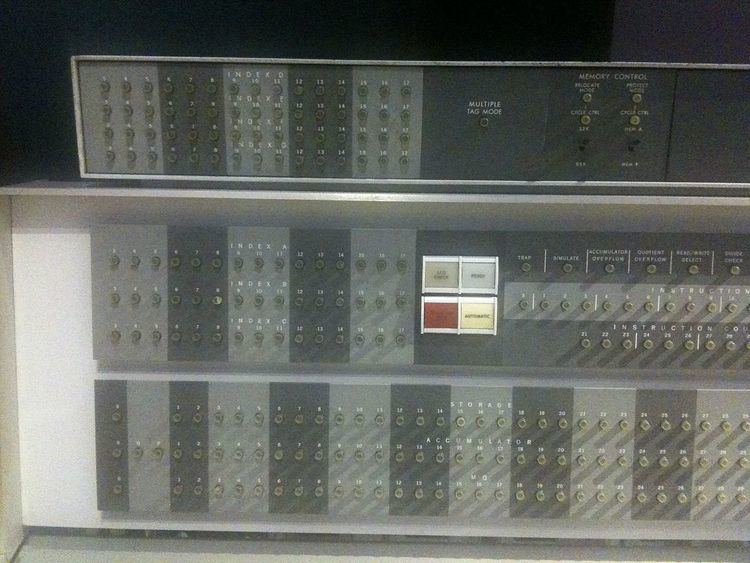 | ||
An index register in a computer's CPU is a processor register used for modifying operand addresses during the run of a program, typically for doing vector/array operations.
Contents
The contents of an index register is added to (in some cases subtracted from) an immediate address (one that is part of the instruction itself) to form the "effective" address of the actual data (operand). Special instructions are typically provided to test the index register and, if the test fails, increments the index register by an immediate constant and branches, typically to the start of the loop. Some instruction sets allow more than one index register to be used; in that case additional instruction fields specify which index registers to use. While normally processors that allow an instruction to specify multiple index registers add the contents together, IBM had a line of computers in which the contents were or'd together.
In early computers without any form of indirect addressing, array operations had to be performed by modifying the instruction address, which required several additional program steps and used up more computer memory, a scarce resource in computer installations of the early era (as well as in early microcomputers two decades later).
History
Index registers, commonly known as a B-line in early British computers, were first used in the British Manchester Mark 1 computer, in 1949. In general, index registers became a standard part of computers during the technology's second generation, roughly 1954–1966. Most machines in the IBM 700/7000 mainframe series had them, starting with the IBM 704 in 1954, though they were optional on some smaller machines such as the IBM 650 and IBM 1401.
Early "small machines" with index registers include the AN/USQ-17, around 1960, and the real-time computers from Scientific Data Systems. The first microprocessor with a true index register appears to have been the Motorola 6800, and the similar MOS Technology 6502 made good use of two such registers. (The earlier Intel 8080 did allow indirect addressing via a register.)
Modern computer designs generally do not include dedicated index registers; instead they allow any general purpose register to contain an address, and allow a constant value and, on some machines, the contents of another register to be added to it as an offset to form the effective address. Early computers designed this way include the PDP-6 and the IBM System/360.
Example
Here is a simple example of index register use in assembly language pseudo-code that sums a 100 entry array of 4-byte words:
Clear_accumulator Load_index 400,index2 //load 4*array size into index register 2 (index2)loop_start : Add_word_to_accumulator array_start,index2 //Add to AC the word at the address (array_start + index2) Branch_and_decrement_if_index_not_zero loop_start,4,index2 //loop decrementing by 4 until index register is zero